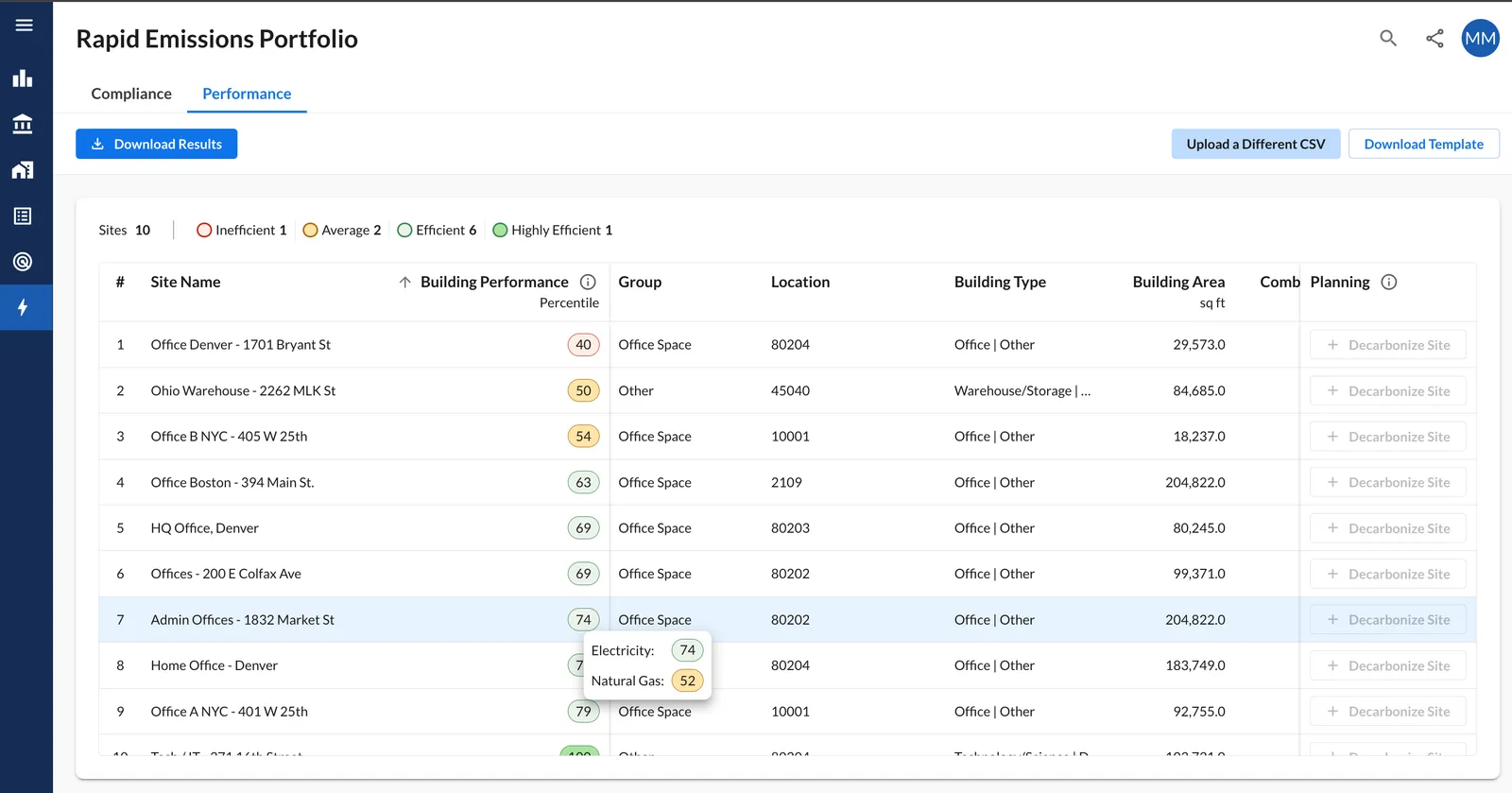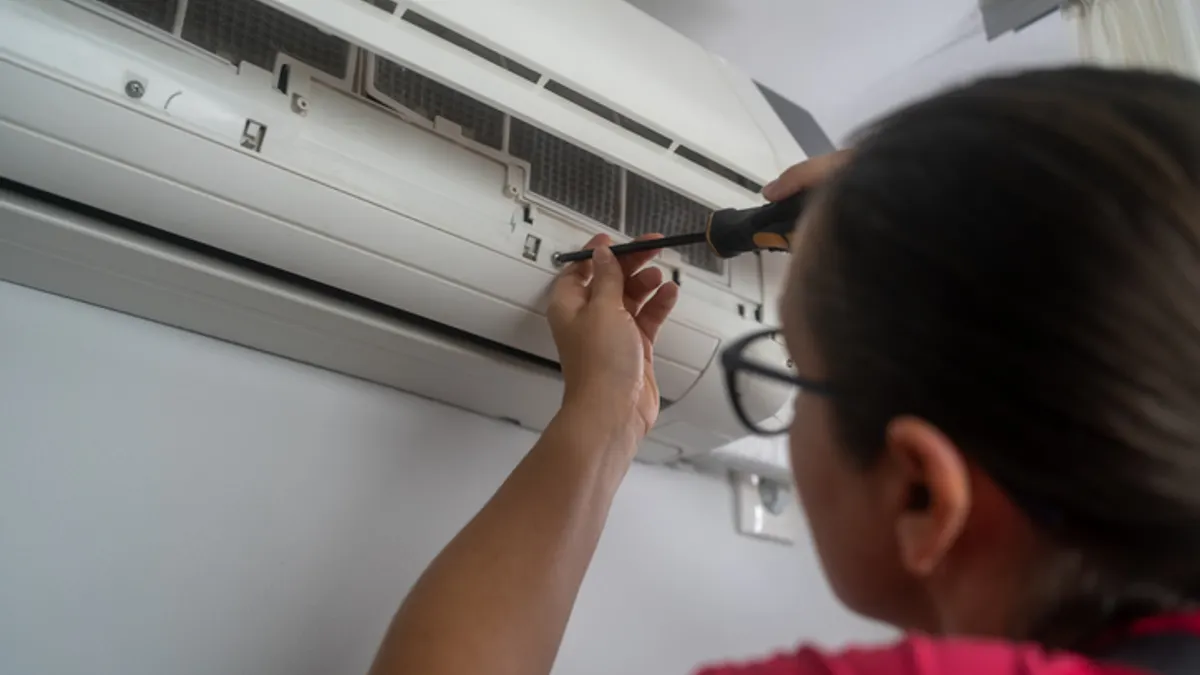Dive Brief:
- NZero has released an AI-powered benchmarking and forecasting tool to simplify the decarbonization process and related compliance measures for building operators and managers, particularly those in the early stages of these efforts.
- The Rapid Emissions Profile tool will serve as a “low-friction entry point” for organizations seeking a baseline understanding of their greenhouse gas emissions and penalty exposure, without requiring access to actual utility data, the company said in an April 18 news release. NZero plans to have the REP readily available through a signup process next week, targeting May 6, a company spokesperson said Wednesday.
- “Not having a baseline is a bottleneck,” NZero Chief Technology Officer John Rula said in an interview. “Customers are finding it challenging to get data. We wanted to create a product that says, ‘Give us the best data you have, whether it’s annual data or monthly data,’” he added, noting that the REP is helpful for landlords who “don’t have access to that.”
Dive Insight:
From the U.S. Securities and Exchange Commission’s climate disclosure rule to state and local mandates like New York City’s Local Law 97, Boston’s Building Emissions Reduction and Disclosure Ordinance and California’s climate-related legislative measures, commercial real estate owners and operators are facing growing pressures to disclose their greenhouse gas emissions.
The rise of regulatory requirements like the SEC’s climate disclosure rules would necessitate a “paradigm shift” in data collection and reporting practices, according to Ronak Shah, energy analyst at building intelligence firm InSite. Building operators are expected to implement robust systems that can provide accurate and real-time data on carbon emissions, energy consumption and other sustainability metrics, Shah said.
To effectively benchmark for energy usage, facilities managers must “gather comprehensive data on their current energy consumption, ideally over a significant period of time, to account for seasonal variations. This data should include electricity, gas, water and other relevant utilities,” said Travis Sheehan, North America lead of city & hubs at Shell Energy. The next step, Sheehan noted, would involve using industry-specific benchmarks to compare that data against facilities similar in size, type and location.
Organizations, however, are impeded by limited access to detailed data and a lack of clarity on where emissions compliance begins, NZero noted in the release. The REP tool, which only requires minimal details like building type, size, location and annual energy consumption, uses machine learning algorithms to produce a benchmark efficiency profile, compliance status and projected annual fines, per the release. The platform includes compliance checking capabilities and an automated feature, which uses the data available to provide large-scale opportunity assessments for costs and emissions savings, Rula explained.
The compliance landscape, which extends beyond federal regulations like the SEC’s climate disclosure rule, is also becoming increasingly complex and distributed, Rula said. He pointed to a growing number of building performance standards focused on energy efficiency and emissions reductions at the local level, like Denver’s Regulation 28, which applies to commercial and residential buildings over 50,000 square feet and involves penalties as high as $5,000 for repeated non-compliance.
Aimed at property owners, especially those with distributed portfolios, REP can quickly assess their compliance status, including potential penalties, Rula said. The tool, he added, would facilitate risk management and help expedite the decarbonization process across buildings, aligning with both corporate and regulatory targets for reductions in energy consumption and greenhouse gas emissions.
By utilizing established benchmarks that allow companies to recognize their exposure and identify challenges their operations face in meeting set standards, the tool quickly audits the compliance landscape for customers and provides insights into which buildings are likely non-compliant, NZero said in the release.

“What would normally take months is calculated in minutes,” Rula wrote in an April 22 blog post, noting that the tool aggregates complex information around components like temperature, environmental factors, utility rates and tariffs, the impact of renewable and grid sources through hourly emission factors and forecasts of emissions reduction opportunities based on usage and location.
Once REP unveils insights into current emissions performance, NZero’s additional tools can enable building and asset owners to develop cost-effective, long-term decarbonization frameworks, per the release.
The basic version of REP is being provided free of charge for a limited time in celebration of Earth Day, NZero said. Users can opt to pay for the full platform, which provides more advanced features including expert review, alternative pathways to compliance and automated greenhouse gas reporting, Rula said.












